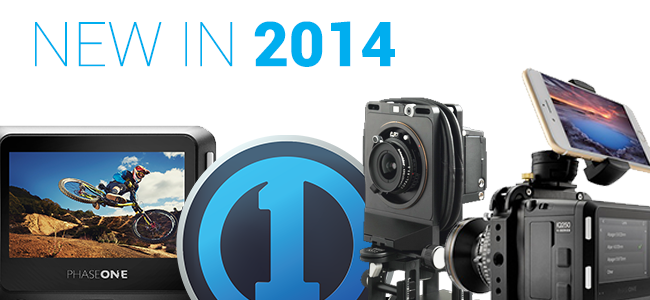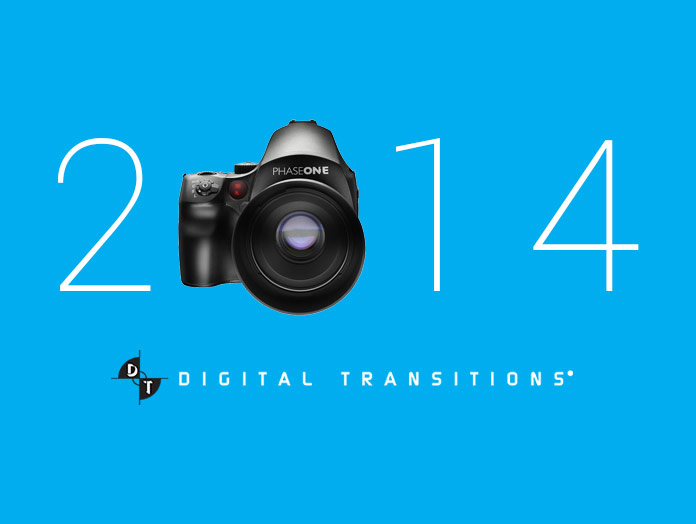Digital Transitions
2014 Medium Format Digital: Year in Review
Why Photographers Bought Medium Format in 2014
While much of the camera industry struggled in 2014, the medium format market was booming, especially for Team Phase One (Phase One + Mamiya + Leaf + Schneider). We sat down recently and reviewed the list of our clients who bought into medium format for the first time in 2014. We found that three things are driving them: differentiation, creativity, and image quality.
Differentiation
The Canon 5D3, 7D2, Nikon D800, and Nikon D7000 are all more similar to each other than different. The number of photographers who are using these cameras with a small number of specific lenses (24-70mm, 50mm, 85mm, 70-200mm) and Adobe LightRoom with a small number of filter packs is truly astounding. A good camera does not make a good photographer, but a camera absolutely does influence shooting style, image look/feel, and the perception factor of a photographer. Many of our clients who bought into medium format in 2014 did so at least in part to differentiate themselves and their images. It’s not a panacea, nor should it be a replacement for continuing to work on the “fundementals” (e.g. lighting, composition, etc.), but upgrading camera formats can have a pronounced effect.
Creativity
The modularity of medium format digital back systems like those from Team Phase One is very strong. A single Phase One IQ2 back can be used on a Phase One DF+ Body, a Mamiya RZ Pro IID body, a Tech Camera body (architecture/landscape) like the Arca Swiss RM3Di, a modern view camera body (tabletop, special effects, macro) like the Arca Swiss Univeralis, a homemade pinhole body, and a dedicated art reproduction body. Alternatively, they can be purchased for a Contax 645, Hasselblad H5X, or classic Hasselblad 500 series body. In this array of cameras is an arsenal of tools not possible in the general 35mm camera world — like Optical Waist Level Viewfinders, bright ground glass, true high speed flash sync via Leaf shutter lenses (not that limited “high speed sync” you find with Canon/Nikon), razor sharp wide angle leses, and movements like rise/fall/tilt on every lens. These tools offer flexibility for many creative projects that would otherwise be difficult or impossible.
Image Quality
For years photographers waited for high-resolution to reach the 35mm world. When the Nikon D800 was finally delivered many photographers realized two things: resolution isn’t everything and lens quality isn’t optional. Shooting with a medium format system is about much more than resolution. In 2014 we’ve had photographers move to medium format for sensor size, color subtly, color accuracy, appearance of skintones, dimensionality of rendering, dynamic range, tonal smoothness, aesthetics of grain structure (film like rather than clumpy and visually disruptive), the native 4:3 aspect ratio. Moreover we’ve had more photographers in 2014 (than in any previous year) come to us because they’ve found their dSLR lenses lacking in bite, look, and sharpness – especially when used with a 36mp dSLR. It’s enormously satifying to show them a Schneider 80LS (the “kit” lens included even with the <$14k Leaf Credo 40 kit) shot wide open at 80mp - razor sharp, but with gentle transitions to a smooth out of focus area and with a beautiful overall rendering.
Many Internet prognosticators predicted that the release of the D800 would "end" medium format. The reality has been just the opposite; we've sold more cameras to D800 owners who found that more pixels does not mean better image quality. In light of this it's amusing to read rumors of a 50+ megapixel Canon (rumors that have been around since at least 2009) - some photographers won't realize that resolution isn't everything until they see it for themselves.

New Products in 2014
Phase One IQ250
The year started with a bang; the IQ2 line of digital backs was expanded to include the fast, veristile, high-ISO capable IQ250. We tested it on Tech Cameras, wrote about itsorigin story on Luminous Landscape, and published an article regarding its speed with our client, Smashbox Studios. More to the point, we’ve been selling and renting them like 50mp hotcakes. Other CMOS based medium format systems have been released since, but none comes close to the color, speed, robust tethering, wireless review/control, flash sync speed, lens quality, LCD quality, or 5-year warranty of the IQ250.
Capture One v8
This sleeper release focused on speed and stability. Sound boring? Not to anyone who spends hours each week tethering, editing, adjusting, or processing raw files. The release sparked some historical nostalgia in us, inspiring a feature length article on theHistory of Capture One which we published via FStoppers. For owners of Team Phase One digital backs this release was especially sweet – they can always use the latest version of Capture One with their digital backs at no cost. (note: DT still offers 10% off the standard upgrade price Phase One charges for C1. See the promo code at the top of our Capture One page).
Cultural Heritage Digitization
The Digital Transitions Division of Cultural Heritage (DT DCH) had a banner year. A new Cultural Heritage Edition of Capture One, Capture One CH 8, launched alongside a new system for preservation grade film scanning. Phase One also began distributing DT DCH digization equipment worldwide through their Culturage Heritage partner channel. In addition, DT DCH brought on Carol Wilczewski and Wayne Cozzolino who have decades of experience within the Cultural Heritage community.
Arca Swiss
An entire host of Arca Swiss equipment was announced at Photokina. Now many of those are shipping or about to ship. For instance DT is delighted to have been the first in the country with a Univeralis.
Cambo
A few new Cambo products were launched and detailed in our Photokina blog entry.
Schneider 40-80mm LS Lens
Generally we assume that a zoom lens constitutes a compromise, sacrificing image quality for convenience. So when the new Schneider 40-80mm LS arrived we were expecting weak corner-performance and high chromatic aberration, at least relative to the high performance Schneider 55mm LS and 80mm LS prime lenses. The results of our 40-80LS Tests show how problematic it is to make assumptions.
Phase One A-Series
This combination of an Alpa TC, Rodenstock Lens, and a Phase One digital back is now shipping. We’ve received our first unit and done some testing so stay tuned to our blog for more thoughts.

